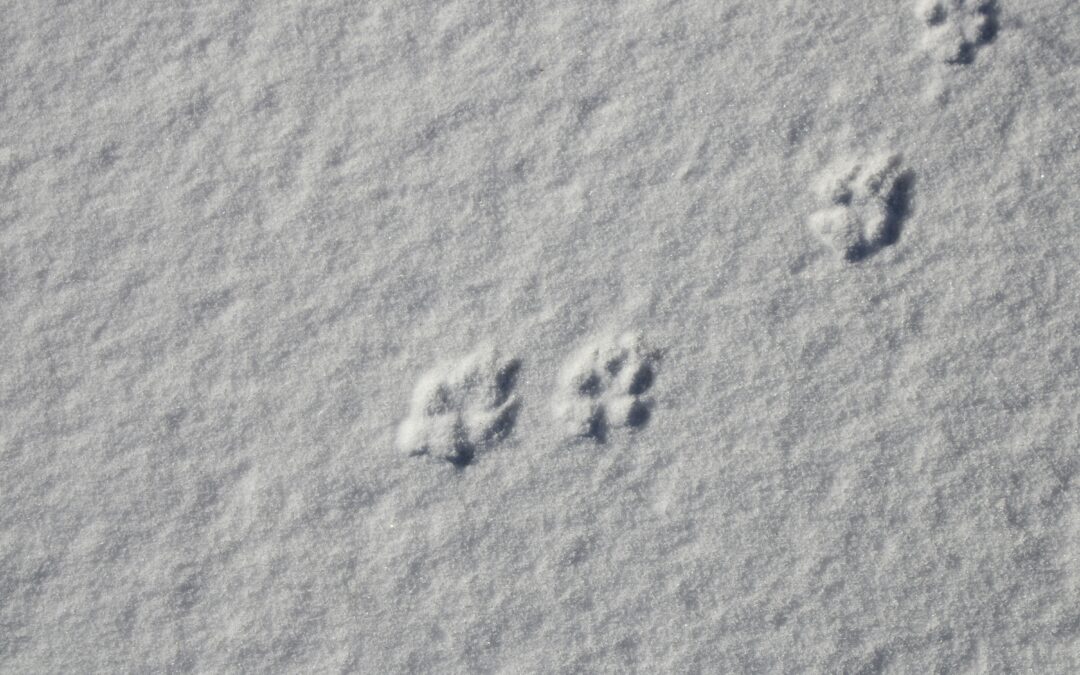Happy New Year, everyone.
Now that the flurry of the holidays has passed, a unique quiet has settled over the landscape. January in Canada brings a stillness that’s hard to find any other time of year. The world is hushed under a blanket of snow, and it’s tempting to think that nature has gone dormant, waiting for the warmth of spring to return.
But if you pause for a moment on a crisp, clear day, you’ll realize the world is anything but asleep. The winter landscape isn’t empty; it’s a storybook waiting to be read. Every drift of snow, every frosted branch, and every tiny track tells a tale of survival, resilience, and the vibrant life that carries on in the heart of the cold. This year, let’s resolve to become better readers of this quiet story.
Learning to Read the Snow
The fresh snow from last night is more than just a clean slate—it’s a daily record of neighbourhood activity. Who was out and about while you were sleeping? You don’t have to be an expert tracker to start noticing the clues.
- The Straight Line Trot: See a line of prints that looks almost perfectly straight, as if on a tightrope? You’re likely looking at the trail of a fox or a coyote. They are efficient travellers, placing their back paws directly into the prints of their front ones to conserve energy in deep snow.
- The Hopping and Bounding: A chaotic pattern of tracks that zigs, zags, and seems to disappear at the base of a tree is almost certainly a squirrel. You can often see where they’ve been digging for the nuts they buried months ago.
- Paired Prints and a Getaway: The distinctive pattern of two small prints followed by two larger ones is the signature of a rabbit or hare. The large hind feet land ahead of the front feet as they bound across the snow.
Taking a few minutes to decipher these tracks transforms a simple winter walk into an engaging mystery. It connects you to the hidden lives of the animals who share your space, reminding you that you’re part of a much larger community.
A Note on Our Footprint: The Problem with Salt
As we navigate our own winter world, we often rely on salt to keep our sidewalks and driveways clear. While it’s effective, common rock salt (sodium chloride) has a significant and often unseen impact on our wild neighbours.
When salt dissolves, it seeps into the soil and runs into local waterways, affecting water quality for aquatic life. For birds, walking on salted surfaces can cause irritation and burns on their feet. Perhaps most dangerously, animals like deer and moose are naturally attracted to salt licks. Road salt creates an artificial lure, drawing them to the edges of dangerous, busy roads.
This winter, consider making a simple switch. For traction, sand or sawdust are excellent, harmless alternatives. If you need a de-icer, look for products specifically marked as “pet-safe” or “eco-friendly.” These usually contain calcium magnesium acetate or potassium chloride, which are far gentler on paws, plants, and the wider ecosystem.
Living thoughtfully alongside nature doesn’t require grand gestures. It starts with quiet observation and small, conscious choices. It starts with seeing the story in the snow and doing our part to ensure those stories continue for many winters to come.
Here’s to a year of curiosity and compassion.

